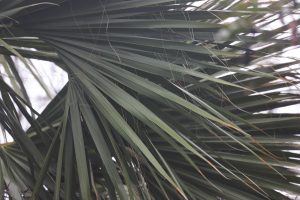It was the duration of the freeze that played a significant role in survival. Some plants could not produce enough internal “anti-freeze” to survive.
Palms are often planted by newcomers thinking that South Texas is subtropical. Although our summers feel that way, freezes in 1983, 1989, 2011 and most recently in 2021 should finally dispel that myth.
Still, all is not lost. While many palms and cycads froze beyond redemption, a few species did tolerate the recent freeze, albeit with frozen fronds that need to be removed.
For freeze-tender palms like Mexican fan palm, remove the fronds now. The carcasses may remain for another couple of additional months. Unfortunately, queen, royal, date, Mexican fan, and pindo palms most likely died.

As for palms that survived and should be planted in the future, California fan palm, Mediterranean fan palm, Sabal palm and windmill fan palm are my choices. Additionally, two types of Sabal palm to consider are cabbage palm and Mexican (native to the Rio Grande Valley). Canary Island date palm is a good feather palm choice.
Sago palm, though not a true palm but a cycad, is an in-between palm. The fronds are likely all frozen and should be removed. But I would put their total mortality rate at about 60 percent — the further north you are, the more likely sago died.
It was the duration of the freeze that played a significant role in survival. Because it was below freezing for an extended period, some plants could not produce enough internal “anti-freeze” to survive. Location was also a factor. Palms in sheltered, south facing locations had the best protection. If nothing green appears from the center heart by June 1, you will have to dispose the palm.
As far as future actions are concerned, all palms have frozen fronds that require removal. There is no magic concoction or fertilizer that will enhance survivability. All you can do is watch and wait.
In the future, remember to plant a cold tolerant California or windmill palm. Even better, plant an oxygen-producing, pollutant-absorbing, freeze-surviving live oak or cedar elm instead.


